Podcast: Play in new window | Download
Subscribe: Apple Podcasts | RSS
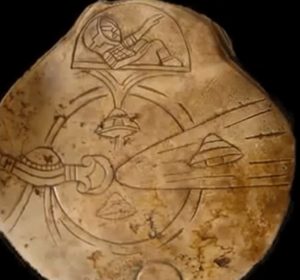 In the high desert of the far northeastern corner of the Mexican state of Jalisco, a former Mexican military doctor set up camp after a long day of exploring the country. The man’s name was Dr. Pablo Enrique García Sánchez and the year was 1999. Dr. García was near the area known as El Toro in the municipality of Ojuelos de Jalisco, near the confluence of the states of Jalisco, Zacatecas and Aguascalientes. This is a pretty sparsely populated and somewhat barren part of Mexico and the doctor took the camping trip alone to get away from the rigors of modern civilized life. What he found on his trip astounded him: a stone weighing a few pounds and about the size of two hands cupped together. On the surface of the stone were strange markings seemingly done by a craftsman of a forgotten civilization. To García’s untrained eye, the carving on stone looked Maya in origin, but that would have been nearly impossible owing to the fact that this part of Mexico is a thousand miles from the ancient Maya heartland. It was somewhat more believable for the artifact to be of the closer and more recent Aztec civilization, as trading routes of the Aztec Empire did go that far north into the desert areas. Had he found an item that had been carried there a long distance? Were there other carved stones like this one? The camping trip over, Dr. García returned to the town of Ojuelos and showed his find to locals. Some people in the town had recognized the style of the carving immediately and had told the doctor that farmers and ranchers had been stumbling over artifacts like his for 80 years or more. There were even rumors of hundreds of elaborately carved objects being found in a cave near where García had been camping, along with a skull that did not belong to any creature known to man. Others told him of a lost city and of a large temple that few knew of. Some locals even shared with him some of their own finds: stones and pieces of stones with strange carvings on them. A curious man by nature, Dr. García decided that he would dedicate more time to these curious pieces, and together with a few other people interested in studying the stones, he formed a research group called Nahui Ollin, which in the Aztec language Nahuatl, means “Fifth World,” or the world in which humanity currently resides according to the old Aztec legends.
In the high desert of the far northeastern corner of the Mexican state of Jalisco, a former Mexican military doctor set up camp after a long day of exploring the country. The man’s name was Dr. Pablo Enrique García Sánchez and the year was 1999. Dr. García was near the area known as El Toro in the municipality of Ojuelos de Jalisco, near the confluence of the states of Jalisco, Zacatecas and Aguascalientes. This is a pretty sparsely populated and somewhat barren part of Mexico and the doctor took the camping trip alone to get away from the rigors of modern civilized life. What he found on his trip astounded him: a stone weighing a few pounds and about the size of two hands cupped together. On the surface of the stone were strange markings seemingly done by a craftsman of a forgotten civilization. To García’s untrained eye, the carving on stone looked Maya in origin, but that would have been nearly impossible owing to the fact that this part of Mexico is a thousand miles from the ancient Maya heartland. It was somewhat more believable for the artifact to be of the closer and more recent Aztec civilization, as trading routes of the Aztec Empire did go that far north into the desert areas. Had he found an item that had been carried there a long distance? Were there other carved stones like this one? The camping trip over, Dr. García returned to the town of Ojuelos and showed his find to locals. Some people in the town had recognized the style of the carving immediately and had told the doctor that farmers and ranchers had been stumbling over artifacts like his for 80 years or more. There were even rumors of hundreds of elaborately carved objects being found in a cave near where García had been camping, along with a skull that did not belong to any creature known to man. Others told him of a lost city and of a large temple that few knew of. Some locals even shared with him some of their own finds: stones and pieces of stones with strange carvings on them. A curious man by nature, Dr. García decided that he would dedicate more time to these curious pieces, and together with a few other people interested in studying the stones, he formed a research group called Nahui Ollin, which in the Aztec language Nahuatl, means “Fifth World,” or the world in which humanity currently resides according to the old Aztec legends.
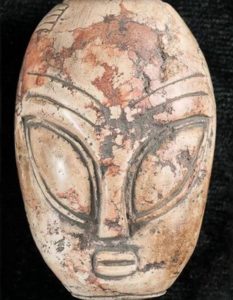 So what do these artifacts look like? What are they made of and is there any indication as to how they were fashioned? Dr. García’s Nahui Ollin organization has catalogued over 400 unique items gathered from the hills and desert valleys outside the town of Ojuelos and across the countryside into the Mexican state of Zacatecas. Over 95% of these pieces are made of carved stone while the rest are made of a high-fired clay substance. The artifacts are perhaps the most controversial in Mexico because of what they depict. In a strange fusion of Mesoamerican art styles, the pieces appear to show flying saucers, the typical “Grey aliens” as reported by modern UFO abductees, humans in space suits and allegorical outer space scenes along with fanciful animals and strange bits of writing reminiscent of Maya glyphs. What has been interpreted as star maps have also been found on some of these stones. In the collection under study there are a few representations of the central part of the Aztec calendar or sun stone, with the center face of the sun replaced by a more otherworldly-looking, stylized grey alien face. For many years before García took his camping trip, the artifacts had long been sold to tourists, which have led many skeptics to believe that all of these pieces are fakes, and that selling these items, along with guided tours to the caves and surrounding areas to hunt for artifacts, is just a way for locals to make money off of the gullible. Although the Nahui Ollin group has over 400 of these pieces in its collection for study, researchers believe that there are thousands more of these artifacts in private collections all over the world, and a great many of them in the private homes of local families.
So what do these artifacts look like? What are they made of and is there any indication as to how they were fashioned? Dr. García’s Nahui Ollin organization has catalogued over 400 unique items gathered from the hills and desert valleys outside the town of Ojuelos and across the countryside into the Mexican state of Zacatecas. Over 95% of these pieces are made of carved stone while the rest are made of a high-fired clay substance. The artifacts are perhaps the most controversial in Mexico because of what they depict. In a strange fusion of Mesoamerican art styles, the pieces appear to show flying saucers, the typical “Grey aliens” as reported by modern UFO abductees, humans in space suits and allegorical outer space scenes along with fanciful animals and strange bits of writing reminiscent of Maya glyphs. What has been interpreted as star maps have also been found on some of these stones. In the collection under study there are a few representations of the central part of the Aztec calendar or sun stone, with the center face of the sun replaced by a more otherworldly-looking, stylized grey alien face. For many years before García took his camping trip, the artifacts had long been sold to tourists, which have led many skeptics to believe that all of these pieces are fakes, and that selling these items, along with guided tours to the caves and surrounding areas to hunt for artifacts, is just a way for locals to make money off of the gullible. Although the Nahui Ollin group has over 400 of these pieces in its collection for study, researchers believe that there are thousands more of these artifacts in private collections all over the world, and a great many of them in the private homes of local families.
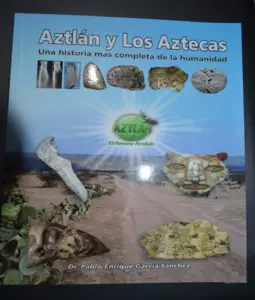 In 2015 Dr. García published a book about the studies conducted by his research group called Aztlán y los Aztecas: Una historia más completa de la humanidad, or, in English, “Aztlán and the Aztecs: A More Complete History of Humanity.” The book starts with the premise that the area in which the artifacts were found was part of the mythical point of origin the Aztecs called Aztlán, and that the pieces discovered show a definite off-world influence on the beginnings of Aztec civilization in the Aztlán homeland. García draws fire from skeptics for his assumptions. The biggest criticism comes from people who see García as the center of a money-making venture and that his organization, whose mission is supposedly to have an objective approach to researching the pieces, clearly has an agenda. This agenda fuels conferences, books, tours, a small museum, and an on-again/off-again internet show called Aztlán, Paraíso Perdido, or in English, “Aztlán, Lost Paradise.” The Nahui Ollin group employs no formally trained archaeologists or those with any academically-based field research experience. A huge criticism of the group is that it does not thoroughly document finds by including information about specific artifact locations, detailed testimony of witnesses or methods used to unearth the pieces. Laboratory tests have been haphazard or do not make sense. In one report, some pieces were claimed to have an age of 16,000 years, but the dating method cited was Carbon 14, which is not used to date objects that are not organic in nature. If testing has been done of organic materials found at dig sites, such as charcoal found in the same strata as artifacts, this has not been made clear. Critics and people who are generally curious about the problems these pieces pose are demanding more scientific research on these finds. This has not been forthcoming, as state and national archaeological and historical groups in Mexico refuse to examine these pieces and dismiss the whole Ojuelos affair as a shoddy hoax.
In 2015 Dr. García published a book about the studies conducted by his research group called Aztlán y los Aztecas: Una historia más completa de la humanidad, or, in English, “Aztlán and the Aztecs: A More Complete History of Humanity.” The book starts with the premise that the area in which the artifacts were found was part of the mythical point of origin the Aztecs called Aztlán, and that the pieces discovered show a definite off-world influence on the beginnings of Aztec civilization in the Aztlán homeland. García draws fire from skeptics for his assumptions. The biggest criticism comes from people who see García as the center of a money-making venture and that his organization, whose mission is supposedly to have an objective approach to researching the pieces, clearly has an agenda. This agenda fuels conferences, books, tours, a small museum, and an on-again/off-again internet show called Aztlán, Paraíso Perdido, or in English, “Aztlán, Lost Paradise.” The Nahui Ollin group employs no formally trained archaeologists or those with any academically-based field research experience. A huge criticism of the group is that it does not thoroughly document finds by including information about specific artifact locations, detailed testimony of witnesses or methods used to unearth the pieces. Laboratory tests have been haphazard or do not make sense. In one report, some pieces were claimed to have an age of 16,000 years, but the dating method cited was Carbon 14, which is not used to date objects that are not organic in nature. If testing has been done of organic materials found at dig sites, such as charcoal found in the same strata as artifacts, this has not been made clear. Critics and people who are generally curious about the problems these pieces pose are demanding more scientific research on these finds. This has not been forthcoming, as state and national archaeological and historical groups in Mexico refuse to examine these pieces and dismiss the whole Ojuelos affair as a shoddy hoax.
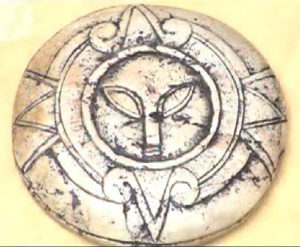 In 2011 the son of Puerto Rican actor Raúl Julia, a Mexican man going by the name of Raúl Julia-Levy brought the strange artifacts of Ojuelos into the international spotlight. Julia-Levy claimed that through family connections he had to former Mexican president Vicente Fox that he would be part of the Mexican government’s plan to release sensitive information confirming Mexico’s longstanding relationship with extraterrestrials, beginning with the ancient Maya. The Ojuelos pieces, which Julia-Levy had claimed were inspired by extraterrestrials but were really Maya in origin, were part of the large corpus of evidence to show this ET contact. The finds at Ojuelos would be combined with other artifacts and documentation provided by the highest government sources to be showcased in Julia-Levy’s book and documentary called Revelations of the Mayans: 2012 and Beyond. This project was not endorsed by Dr. García or his organization, the Nahui Ollin group. The documentary began filming in Mexico in March of 2012 with an expected release date of December of 2012, but a contract dispute between Julia-Levy and the film’s executive producer halted production on the project. Raúl Julia-Levy vowed to complete the manuscript connected with the movie titled either Chronicles of the Mayan Tunnel or Secrets of the Mayan Time Machine, but this never happened. Sometime before the end of the Maya calendar cycle in December of 2012, the man calling himself Raúl Julia-Levy disappeared amid allegations of faking his identity and fraud. The Puerto Rican actor Raúl Julia publicly claimed he did not have a son by that name and that this man was an impostor. Later investigation showed that the man claiming to be Julia’s son never attended Harvard or the University of Southern California as stated in his bio. Amateur researchers later discovered that Raúl Julia-Levy was really a man named Salvador Fuentes and has no connection whatsoever to actor Raúl Julia. The story of the Ojuelos artifacts may have a hoax within a hoax.
In 2011 the son of Puerto Rican actor Raúl Julia, a Mexican man going by the name of Raúl Julia-Levy brought the strange artifacts of Ojuelos into the international spotlight. Julia-Levy claimed that through family connections he had to former Mexican president Vicente Fox that he would be part of the Mexican government’s plan to release sensitive information confirming Mexico’s longstanding relationship with extraterrestrials, beginning with the ancient Maya. The Ojuelos pieces, which Julia-Levy had claimed were inspired by extraterrestrials but were really Maya in origin, were part of the large corpus of evidence to show this ET contact. The finds at Ojuelos would be combined with other artifacts and documentation provided by the highest government sources to be showcased in Julia-Levy’s book and documentary called Revelations of the Mayans: 2012 and Beyond. This project was not endorsed by Dr. García or his organization, the Nahui Ollin group. The documentary began filming in Mexico in March of 2012 with an expected release date of December of 2012, but a contract dispute between Julia-Levy and the film’s executive producer halted production on the project. Raúl Julia-Levy vowed to complete the manuscript connected with the movie titled either Chronicles of the Mayan Tunnel or Secrets of the Mayan Time Machine, but this never happened. Sometime before the end of the Maya calendar cycle in December of 2012, the man calling himself Raúl Julia-Levy disappeared amid allegations of faking his identity and fraud. The Puerto Rican actor Raúl Julia publicly claimed he did not have a son by that name and that this man was an impostor. Later investigation showed that the man claiming to be Julia’s son never attended Harvard or the University of Southern California as stated in his bio. Amateur researchers later discovered that Raúl Julia-Levy was really a man named Salvador Fuentes and has no connection whatsoever to actor Raúl Julia. The story of the Ojuelos artifacts may have a hoax within a hoax.
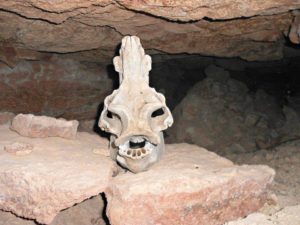 Since the attention brought to the Ojuelos artifacts by the man calling himself Raúl Julia-Levy, many paranormal, ancient astronaut and UFO-related investigators have come out in support of the finds. Is this just a case of “I want to believe”? Have any other elements of ancient material culture been found in the area besides these carved stones? What of the rumors of a temple and lost city? As of now, they have not been revealed to outsiders, if they ever existed at all. In 2014 a supposed skull of an extraterrestrial was found in a remote cave just outside of Ojuelos de Jalisco. An informal examination of this supposed skull showed it to be a haphazard creation fashioned out of various animal bones. To quote Mexican paranormal researcher Daniel Galarza Santiago, who runs the web site El Esceptico de Jalisco, or, in English, “The Skeptic of Jalisco”: “The supposed extraterrestrial skull of Ojuelos looks a lot like Jar Jar Binks from Star Wars.” Besides this skull, no burials have been claimed to have been found, no pottery, no other bones, and no evidence of any other artifacts. All we have are the carved stones that mysteriously seem to appear during walks in the desert. The investigators of the “I want to believe” persuasion have tried for many years to get serious attention focused on Ojuelos from legitimate institutions in Mexico which study ancient artifacts. The ultimate authority for archaeology in the land is Mexico’s National Institute of Anthropology and History based in Mexico City with offices and representatives in every state in Mexico. In response to an inquiry about whether or not it was legal for these supposedly extraterrestrial artifacts found at Ojuelos to be sold off to tourists, the National Institute of Anthropology and History actually crafted something in writing in one of the first times it had ever even acknowledged the
Since the attention brought to the Ojuelos artifacts by the man calling himself Raúl Julia-Levy, many paranormal, ancient astronaut and UFO-related investigators have come out in support of the finds. Is this just a case of “I want to believe”? Have any other elements of ancient material culture been found in the area besides these carved stones? What of the rumors of a temple and lost city? As of now, they have not been revealed to outsiders, if they ever existed at all. In 2014 a supposed skull of an extraterrestrial was found in a remote cave just outside of Ojuelos de Jalisco. An informal examination of this supposed skull showed it to be a haphazard creation fashioned out of various animal bones. To quote Mexican paranormal researcher Daniel Galarza Santiago, who runs the web site El Esceptico de Jalisco, or, in English, “The Skeptic of Jalisco”: “The supposed extraterrestrial skull of Ojuelos looks a lot like Jar Jar Binks from Star Wars.” Besides this skull, no burials have been claimed to have been found, no pottery, no other bones, and no evidence of any other artifacts. All we have are the carved stones that mysteriously seem to appear during walks in the desert. The investigators of the “I want to believe” persuasion have tried for many years to get serious attention focused on Ojuelos from legitimate institutions in Mexico which study ancient artifacts. The ultimate authority for archaeology in the land is Mexico’s National Institute of Anthropology and History based in Mexico City with offices and representatives in every state in Mexico. In response to an inquiry about whether or not it was legal for these supposedly extraterrestrial artifacts found at Ojuelos to be sold off to tourists, the National Institute of Anthropology and History actually crafted something in writing in one of the first times it had ever even acknowledged the 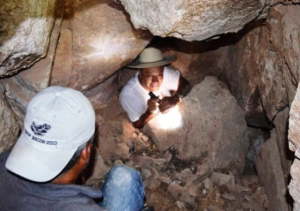 controversial finds. Archaeologist Dr. Ana María Pelz Marin stated, “That despite the falsity of these pieces are being marketed as real pre-Hispanic items, and although people are deceived, there is no crime to pursue, since for the National Institute of Anthropology and History they are not historical objects, but simple crafts.” Dr. Pelz Marin continued stating, “The sale of a nation’s heritage is a federal crime. People have to understand that they are not original pieces.”
controversial finds. Archaeologist Dr. Ana María Pelz Marin stated, “That despite the falsity of these pieces are being marketed as real pre-Hispanic items, and although people are deceived, there is no crime to pursue, since for the National Institute of Anthropology and History they are not historical objects, but simple crafts.” Dr. Pelz Marin continued stating, “The sale of a nation’s heritage is a federal crime. People have to understand that they are not original pieces.”
Of course, people will counter what Dr. Pelz Marin wrote and allege that governments have historically covered up evidence of alien visitation and have denied any contact with extraterrestrials, past or present, and that institutions like Mexico’s National Institute of Anthropology and History are established merely to aid in such cover ups. While this may be true, perhaps we have an undeniably cut and dry example of a hoax coming from a remote corner of Jalisco… or perhaps not. You decide.
REERENCES
Various online sources

19 thoughts on “The Alien Artifacts of Ojuelos de Jalisco”
Has there been any unbiased third party analysis on the pieces?
If so, what were the results?
Not to my knowledge. I think more investigation is needed. Thanks for the comments!
Tudo mentiras, fraudes para enganar otarios como muitos que acreditam em Saci Pererê.
O que é “Saci Perere”? Eu nao conheco isso.
One thing that bothers me is that people keep calling them “Mayan” artifacts. They bear no resemblance to the carvings of Yucatan and Central America. They look more like the Aztec art styles of Central Mexico.
Yes, I agree.
A stone head was recently sold on eBay for $150 and looks very similar:
https://www.ebay.com/itm/ALIEN-STONE-STATUE-/162845124770?ssPageName=STRK%3AMEBIDX%3AIT&nma=true&si=nNGi%252FpY9XUMva%252Bd8%252Bb7B2LKIWmk%253D&orig_cvip=true&rt=nc&_trksid=p2047675.l2557
Awesome! Thanks for sharing!
Ya know, I just hope the person that made it got that paypal money to feed the family for a bit…
I would love to know more. I dig the ancient alien theory. I lived in Egypt for a bit when I was a kid.
I’ve been intrigued with the idea ever since. I’ve been to the Serapeum. I’ve touched the stones….
There is WAY more to these things than we truly know.
I have recently read about the way archiololgists can date newly discovered mayan artifacts , with a process that shows the last time light touched the artfacts, recovered. ( dug up. ) has this new way of dating prehistoric artfacts in El Toro been used in concert with radiocarbon dating technics as of yet ? This should give a more accurate idea of true artifacts , as compared to tourist , fast money fakes..
Thomas, I don’t think the artifacts have been exposed to much rigorous scientific testing. I never heard of the light dating technique. Very interesting!
To amend my previous comment , the Mayan artifacts being found and dated with this process, uses the last time Daylight touched the newly discovered objects.
I have seen one of these stones up close and under magnification and they are for real. Thousands of years old, layered in patina. Go figure !
They seem legit to me as well. Hard to believe farmers in Mexico would be using those glyphs to generate a hoax. I saw one that made reference to alchemical brass! The radiocarbon dating had been tested on the organic adhesive used in the piece. I’m fairly convinced of its authenticity. Regardless, they’re totally amazing!!
I have one. It is chipped on one side and has a patina finish there that I just can’t imagine could be faked. If these are a hoax the creators of it are absolutely brilliant.
Thank you for recovering my cultural artifacts. Please return them to me. Contact:
I do believe that a some of this artifacts are real and that the problem is that people are making money by reproducing fakes ones.
the 5th pic down looks like it could be an “Aztec screaming skull whistle”
Maybe you are on to something here. Thanks for commenting.